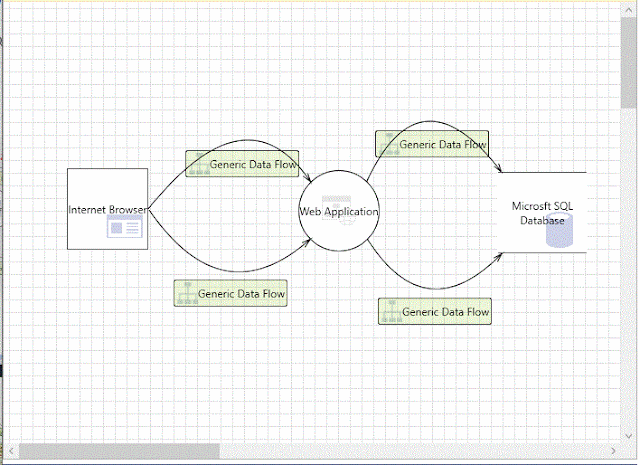THREAT MODELING S.T.R.I.D.E.
Threat Modeling S.T.R.I.D.E.
Threat modeling can help identify threats using an artifactual diagram. S.T.R.I.D.E. is a good way to categorize threats.
S.T.R.I.D.E. Microsoft Threat Types:
1.Spoofing
2.Tampering
3.Repudiation
4.Information disclosure
5.Denial of service
6.Elevation of privileges
I will be doing some S.T.R.I.D.E. analysis with Microsoft's threat modeling tool. I will breakdown the meaning of the S.T.R.I.D.E. acronym in more detail. An example of spoofing(S) would be sending a fake email to someone. An example of tampering(T) would be changing data. An example of Repudiation(R) would be a digital signature. A digital signature ensures that the sender's identity is valid. An example of information discourse(I) would be a data breach. An example of denial of service(D) would be sending one million emails to crash an email server. An example of elevation of privileges(E) would be gaining access to a server with a guest account and then pivoting from a guest account to an admin account.
First, I clicked on create a model.
Then, I created a basic diagram of a web application interacting with an internet browser and database. In my threat model, the end-user would use the web browser to login to the web application. The web application would then pull the end-users data from the database. It is many issues with this simple threat model as you will see below.
Next, I clicked on the analysis tab to further inspect the threat model. The analysis tab can show potential threats.
37 potential threats were found. High-severity threats should be looked at first. You will notice to the right it is a section for the SDL Phase. SDL stands for software development life-cycle. All my threats are in the implementation and design phases. The S.T.R.I.D.E. category is also shown here.
I drilled down into the first threat listed. This threat was for denial of service or DoS. The description states "Failure to restrict requests originating from third-party domains may result in unauthorized actions or access of data". Denial of service attacks can cause companies to lose a lot of money. For example, if Amazon's website is down for one hour that is millions of dollars lost. Possible mitigations are also stated once you drill into the threat.
I had a great time learning more about threat modeling using Pluralsight and Microsoft's Threat Modeling tool.
Thanks for visiting my blog!
Please leave a donation with the link below if you would like to support the blog.




